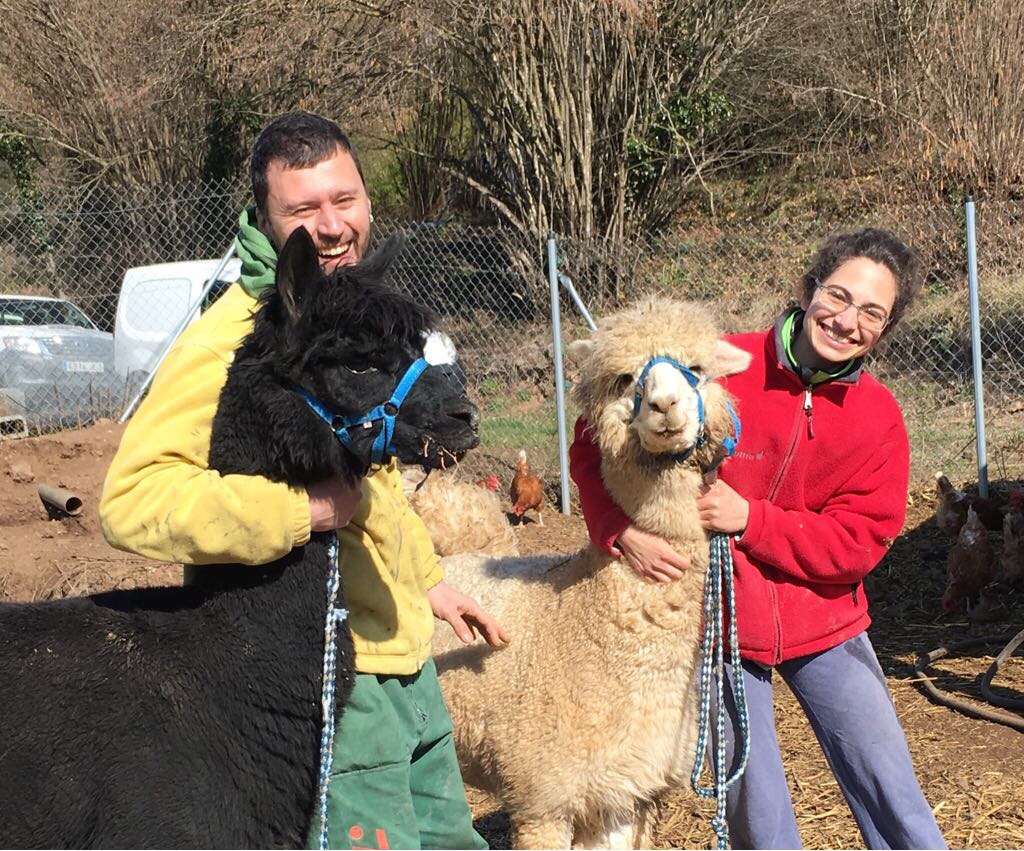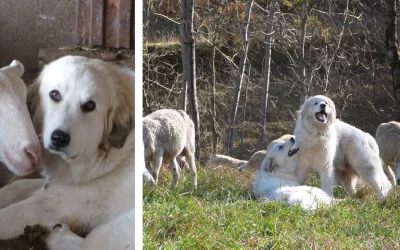Mas Castanyer (www.mascastanyer.cat), an organic farm of 1300 hens located at La Garrotxa Volcanic Zone Natural Park, decided to fight against constant attacks from predators to their hens with an innovative and sustainable method: introducing two young male alpacas to the range.
This practice-led innovation has been part of the Hennovation EU project (www.hennovation.eu). Ecogarrotxa and AlpacaTrax also collaborated with this project.
Free range systems for laying hens are becoming more popular due largely to their perceived welfare benefits for the hens. However, producers report high mortality levels (e. g. some farmers report 30% mortality rate) that are totally unsustainable. Producers highlight predation as one of the main cause of death. Beyond the direct effects of the predatory attacks, the Network reported that their hens appear tense and agitated after an attack and were reluctant to access the outdoor area during several days following the attack. Furthermore, producers indicate a possible relationship between the incidence of injurious pecking and the frequency of attacks from birds. Enrichment of the outdoor area with trees and other types of shelters decrease the risk of attack. However, the predators readily target the hens that go outside the protected area. Other strategies to prevent attacks from predators have been raised such as the inclusion of roosters in the flock or trained dogs. The Network reported that roosters are not efficient enough against predators. Trained dogs appeared to cause injuries and even kill birds as a result of playful behaviour or aggression. The presence of alpacas on a farm, sharing the outdoor area with the hens can successfully reduce the number of attacks of predators.

Pol and Olga taking care of their alpacas
Alpacas are territorial, with males gathering and defending females within their territories. Alpacas are typically aggressive toward predators and appear to readily bond with other animals and aggressively protect them.
It is recommended to use young male alpacas (between 1 and 3 years old) that have been correctly socialised with people and hens previously. Alpacas are highly sociable animals and should not be introduced as a single animal.
Alpacas do not need training to protect the range. However, they need an adaptation period of around 3 weeks to get use to their new surrounding and get more confident.
Daily positive and friendly interaction between the farmer and the alpacas is essential: giving some food, gently touching them and checking if the animals do not have any health problem. Once a week the alpacas should be manipulate with a headcollar for them to get used to it. This will allow the farmer to easily grab the animals if necessary (ex. For health treatment or to move the alpacas to another paddock).
A male alpaca may cost around 500-700 euros/animal, but this may vary depending of the type of fibre the animal has and the country. A comfortable roofed shelter is necessary. Clean and fresh water and roughage should be provided ad libitum.
Normally there is little cost associated with looking after them: diet based in roughage, some mineral and vitamine supplementation, toenail trimmed, vaccination and worming. However, be aware that alpacas should be sheared once a year. Except in UK, alpacas sheperd are scarse and the shearing process can become a stressful event!



